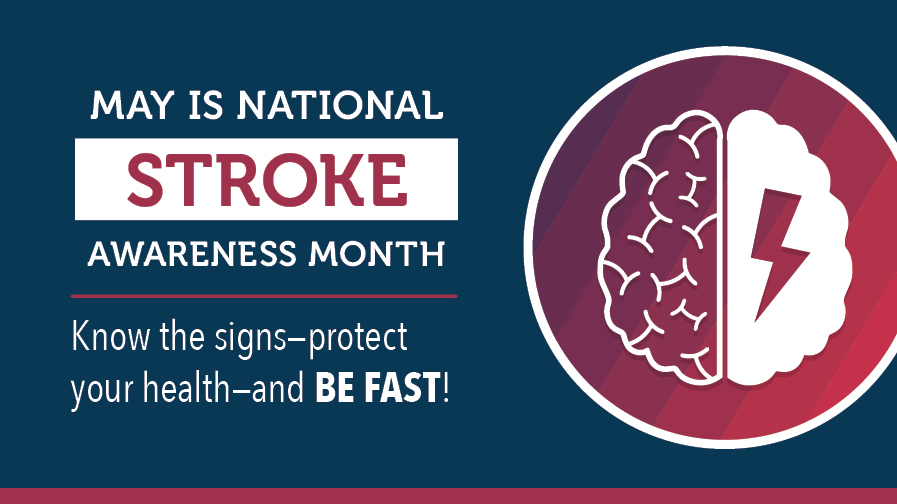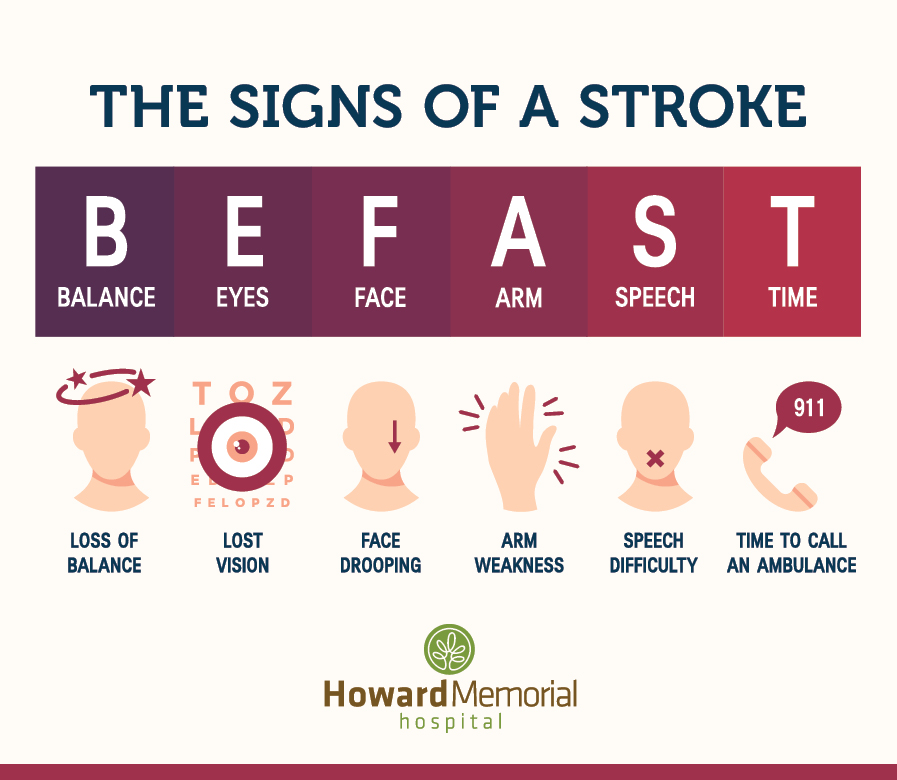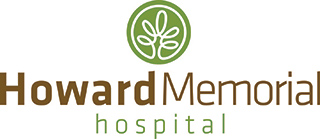Blog
May is National Stroke Awareness Month
May 16, 2022
Know the signs—protect your health—and BE FAST!
Sudden and serious
Every 40 seconds someone in the United States has a stroke—a condition where blood flow and oxygen are cut off from the brain because of a blood clot or blocked blood vessel. Strokes can lead to death, permanent loss of brain function and are the leading cause of long-term disability. A stroke occurs suddenly. Brain cells die in minutes. And prompt treatment is critical—which is why it’s important to know how to detect and help prevent strokes.
Know the signs
Recognizing the symptoms of a stroke could save your life—or the life of someone you love. Take signs seriously and call 9-1-1 immediately. Common signs include:
- Vision issues
- Sudden numbness
- Unusual confusion
- Loss of balance
- Headache with vomiting
- Paralysis
- Metallic taste in the mouth
- Difficulty swallowing
If you think someone is having a stroke, B.E.—F.A.S.T.:
- B. Balance—are they dizzy, experiencing loss of coordination or having trouble standing?
- E. Eyes—are they having trouble seeing out of one or both eyes?
- F. Face—ask them to smile. Check if one side appears to be drooping.
- A. Arm—have them to raise both arms. Is one drifting lower?
- S. Speech—ask them to speak. Does their speech pattern sound normal?
- T. Time—if you observe symptoms, call 911 immediately. Every second counts.
Stroke risk factors
While some things—genetics, gender, race and age—are beyond our control, many risk factors for stroke are linked to lifestyle choices. Your provider can identify health risks and work with you to treat—and help you change—conditions that could lead to this serious, life-changing event. Risk factors include:
- High blood pressure
- Obesity
- Tobacco use
- Excessive alcohol intake
- Atrial fibrillation (AFib)
- High cholesterol
- Diabetes mellitus
- Certain blood disorders (such as sickle cell)
- Prior strokes, mini strokes or if you are experiencing a transient ischemic attack (TIA)
An ounce of prevention
Keep regular visits with your primary care provider for screenings that could indicate if you’re at risk for a stroke. Among other things, he or she will evaluate your blood pressure (one of the biggest risk factors for strokes), weight, lifestyle and health history to assess health risks—and recommend treatments, medications or lifestyle changes to help protect your heath. Talk to your HMH primary care provider—or visit our primary care team page to learn more or to schedule important wellness appointments.

